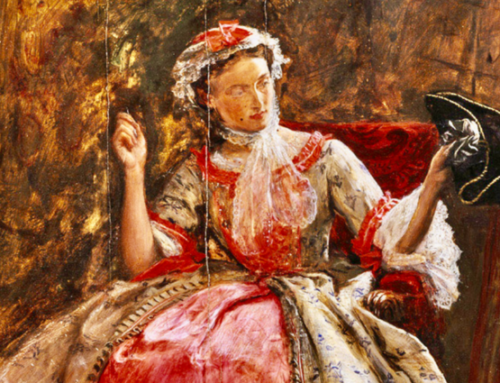A Life of Flannery O’Connor, by Brad Gooch
Mary Flannery O’Connor described herself as a 13th century Catholic and she was right. Surprisingly in an age given to nihilism, progressivism, and consolidation this traditional, Southern, cerebral, talented and orthodox Catholic is among America’s most important writers. There are any number of literary, cultural, and psychological reasons why Mary Flannery stands among the pantheon of American writers but, there are none more important than the fact that she understood an inherent, apodictical truth: modern man has closed his existence, “annihilated the cosmos by contracting reality into himself,” and created a “new world” formed in Hegelian second realities.
The beautiful, brilliant, passionate Flannery was God’s partisan guerrilla. She eschewed modernity’s derailments, technocratic miasmas, and the primordial desire to destroy and rebuild in an endless Gnostic rhythm. She was the crusader knight, who understood the metaxical reality as God’s gift; that life was sacrosanct, and the communion of man and the divine proffered redemption in a world distorted by sin. It is this aspect of her personality, of her being, that draws the attention of even the most adamant atheist. Flannery’s gift is her ability to reify the possibility of immortality.
Her work and her life have become something of a cottage industry. The latest of a phalanx of literary critics to divine Ms. O’Connor’s psyche and work is Brad Gooch whose heralded 2009 biography of the Grand Dame of Andulasia is the best of the lot. It is surely “the best” in terms of its comprehensive and exhaustive examination of all things Flannery. And to his credit, Gooch has the decency to avoid both the apotheosizing hagiography and the contemptuous modernist dismissal.
So it was that while the church was well on its way to being immanetized by an approaching Vatican II, and while a pernicious nihilism would, in time, gloriously erode all of Western culture and corrupt the toporific seminaries, universities, and parishes, Ms. O’Connor was feverishly creating a powerful response to and a rejection of those second realities that acknowledged the derailed ideological distortions so coveted by modernity. Consequently, by the middle of the century this young woman captured the tension of reality in her literary work. She explicated in story as the sages had done in myth, the truth of the Ground of existence, wherein truth, order, and reality are experienced as a transcendent reality. Refortifying a vocabulary of the experience, where the condition of the “nuances” of the tension of existence were described in the words: love, hope, and faith. Words that were fundamental in Flannery’s art because she understood the intrinsic nature, aptly identified even before Heraclitus, not only of existence but of the necessary Augustinian concept of “amor Dei” which determined the ground of human experience as an event of potential being not existing out of itself but rather as coming “from somewhere even if we don’t know from where.”
But Flannery’s oeuvre, Gooch observes, possessed a moral, perhaps spiritual, accretion that provided a unique insight and wisdom adumbrated in her story and life. While visiting St. Catherine’s College of St. Paul in 1960 to deliver a lecture titled, “Some Thoughts on the Catholic Novelist,” she remarked that, “The the fiction writer should be characterized by this kind of vision. His kind of vision is prophetic vision. Prophecy…is dependent on the imaginative and not the moral faculty. The Prophet is a realist of distances.” But, the prophet is limited by their knowledge or horizon and as Plato tells us in the “Laws,” divine reality is determined by vision, by opsis, and it was the “vision” that was Flannery’s domain.
And, while fans of Flannery will focus on her intellectual and spiritual exuberance, her biographer, relentlessly reminds us that she was flesh and bone, that she was all too human, given to idiosyncratic behavior common in the specie, and always seemed to enjoy “good” companionship and camaraderie. In the summer of 1953 she made her first visit to the home of Brainard and Frances Cheney, Cold Chimneys and “renamed Idler’s Retreat after central heat was installed in 1957” which had become a gathering place for the most formidable association of American literati, the “Southern Renaissance,” many of whom originated with the renown “Fugitives” of Vanderbilt of which Brainard was a member. Compared by Cleanth Brooks as similar to the Irish literary renaissance this loose, unofficial cadre included Brooks, Caroline Gordon, Robert Penn Warren, Randall Jarrell, Andrew Lytle, Eudora Welty, Allen Tate, Katherine Ann Porter, Jean Stafford, Peter Taylor, Eleanor Ross, Malcolm Crowley, Russell Kirk, Robert Lowell, and Walker Percy.
The highpoint of the weekend, Gooch tells his readers, was the gathering in the Cheney’s impressive library where Flannery read aloud “The River” and later “A Good Man is Hard to Find.” A visitor that weekend, Ashley Brown, recalled that Flannery’s reading of “A Good Man…” left her audience enthralled, “by the time that the grandmother found herself alone with The Misfit we were stunned into silence. It was a masterful performance.”
Flannery had what is now the obligatory lesbian friend, one Betty Hester, Gooch dutifully reports. A fact that must have driven many on the left wild with breathless anticipation as the author reports Betty’s honesty in admitting a sexual indiscretion with a woman in Germany just after the war in a letter to Flannery. Flannery’s immediate response would warm the heart of the most radical of the “politically correct” crowd:
“I can’t write you fast enough,” Flannery wrote, “and tell you that it doesn’t make the slightest bit of difference in my opinion of you, which is the same as it was, and that is: based solidly on complete respect.” So there you have it. A rock solid, Latin Mass Catholic confessing in the mid-1950’s that her friend’s sexual preferences doesn’t effect their friendship.
Sadly, while Flannery understood their relationship as a form of “kinship,” Betty saw it differently. Forty years later in a letter Betty wrote to novelist Greg Johnson, she confided, “As you must sense, I did love her very, very much-and, God knows, do.”
The author rather excels in his close historical and literary analysis of Flannery’s work. For example in “The Artifical Nigger,” he explains that even in the South in the mid-1950’s the “title phrase instantly got her in trouble.” The iconic Fugitive writer/editor, John Crowe Ransom, desired to publish Flannery’s story in his Kenyon Review but wrote her saying “I hate to insult the black folks’ sensibilities.” Flannery, however, wouldn’t relent on the offensive phrase, which triggered her creative instinct, having first heard it from her mother, Regina, who in being given directions by a stranger pointed her toward the only house in town with an “artificial nigger.”
After several rewrites and numerous suggestions from her mentor, Caroline Gordon (Mrs. Allen Tate), Flannery was finally pleased with her work and wrote of her protagonist’s “transformation” as “the action of mercy covered his pride like a flame and consumed it.” Flannery, Gooch tells us, “viewed the story’s diminutive plaster-of-Paris statue-provoking the healing of a rift between uncle and nephew-as a textbook Christ symbol, suggesting ‘the redemptive quality of the Negro’s suffering for us all.'”
Gooch’s analysis of O’Connor’s remarkable oeuvre is both close and in depth and reveals a balanced exegesis whose primary concern is the objective truth.
I find that I’m not able to tell you of her suffering from lupus erythematosus. Gooch provides an accurate and exact accounting of her misery. But, I’ll leave the constant reader with a rather profound paragraph rendered by the author. A paragraph that Mary Flannery would have approved and one that wonderfully summarizes the tenuous reality of her metalepsis:
“Flannery spent her life making literary chickens walk backward. But she had also spent much of her adult writing life looking down the barrel of the Misfit’s shotgun. Just as her friends had to discern the contours of true suffering between the lines of her funny vignettes of invalidism, so her stories included a coded spiritual autobiography.”
It is not possible, upon reading her stories, that one does not love Mary Flannery O’Connor.
Books on Flannery O’Connor may be found in The Imaginative Conservative Bookstore. Reprinted with the gracious permission of the author.








Leave A Comment